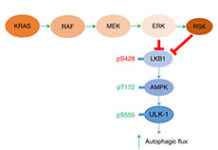The LUMINA study investigators showed that women 55 years of age or older with T1N0, grade 1 or 2, luminal A breast cancer have a very low risk of local recurrence at 5 years after breast-conserving surgery when treated with endocrine therapy alone.
The prospective and controlled nature of this study supports conclusion that such patients are candidates for omission of radiotherapy. The findings are reported by Dr. Timothy J. Whelan of the Juravinski Cancer Centre at Hamilton Health Sciences in Hamilton, ON, Canada, and colleagues on 17 August 2023 in The New England Journal of Medicine.
Radiotherapy is commonly administered after breast-conserving surgery to reduce the risk of local recurrence and avoid mastectomy. However, radiotherapy is inconvenient for patients, involving 3 to 6 weeks of daily treatments, and is costly. It is also associated with considerable short-term and long-term side effects.
Since the era of early trials, conducted 40 years ago, that showed the efficacy of postoperative radiotherapy, a lower incidence of ipsilateral breast cancer recurrence has been observed over time, a change attributed to smaller screening-detected cancers, improved surgical techniques, and effective adjuvant systemic therapy.
The authors wrote in the background that clinicopathologic factors alone (e.g., patient age, tumour size, and tumour grade) are of limited use in the identification of patients at low risk of recurrence in whom radiotherapy can be omitted, while genetically characterised intrinsic subtypes of breast cancer have been shown to predict cancer outcomes.
Of the four main intrinsic subtypes, luminal A, which overexpresses oestrogen pathway genes and is the least proliferative, is associated with the best prognosis. The luminal A subtype was best classified as oestrogen receptor (ER) positivity of at least 1%, progesterone receptor (PR) positivity of more than 20%, HER2-negative, and a Ki67 index of 13.25% or less when this classification approach was compared with multigene-expression profiling.
In a previous retrospective study, the same group of investigators used archival samples of the Toronto–British Columbia trial to show that combining the luminal A subtype defined with the use of immunohistochemical analysis and clinicopathologic factors identified patients at very low risk for local recurrence after breast-conserving surgery.
The objective of the current study was to prospectively evaluate the usefulness of this approach in the identification of patients at very low risk for local recurrence after breast-conserving surgery when they were treated with endocrine therapy without radiotherapy.
The LUMINA investigators performed a prospective cohort study involving women who were at least 55 years of age, had undergone breast-conserving surgery for T1N0 (tumour size <2 cm and node negative), grade 1 or 2, luminal A subtype breast cancer, and had received adjuvant endocrine therapy. Patients who met the clinical eligibility criteria were registered, and Ki67 immunohistochemical analysis was performed centrally. Patients with a Ki67 index of 13.25% or less were enroled and did not receive radiotherapy.
The primary outcome was local recurrence in the ipsilateral breast. In consultation with radiation oncologists and patients with breast cancer, the study investigators determined that if the upper boundary of the two-sided 90% confidence interval for the cumulative incidence at 5 years was less than 5%, this would represent an acceptable risk of local recurrence at 5 years.
Of 740 registered patients, 500 eligible patients were enroled. At 5 years after enrolment, recurrence was reported in 2.3% of the patients (90% confidence interval [CI] 1.3 to 3.8; 95% CI 1.2 to 4.1), a result that met the prespecified boundary. Breast cancer occurred in the contralateral breast in 1.9% of the patients (90% CI 1.1 to 3.2), and recurrence of any type was observed in 2.7% (90% CI 1.6 to 4.1).
The authors commented that they chose a prospective cohort design to evaluate the strategy of omitting radiotherapy because the research question was primarily related to prognosis rather than treatment efficacy and was targeted to a very low risk group. A randomised study could address the effectiveness of radiotherapy in such a population but would require a very large sample to rule out a very small difference. A carefully controlled prospective cohort study is more efficient yet can also be very precise. Such a design has been used to identify low risk breast cancer with the use of a genetic signature in which adjuvant chemotherapy can be omitted.
The authors also wrote that in the current era of shared patient-physician decision making and precision medicine, the notion that a 10% incidence of local recurrence would be acceptable to patients could be invalid. The results of their study suggest that by combining molecular biomarkers with clinicopathologic factors, this risk can be reduced.
The study was supported by grants from the Canadian Cancer Society and the Canadian Breast Cancer Foundation.
Reference
Whelan TJ, Smith S, Parpia S, et al. for the LUMINA Study Investigators. Omitting Radiotherapy after Breast-Conserving Surgery in Luminal A Breast Cancer. N Engl J Med 2023;389:612-619.








